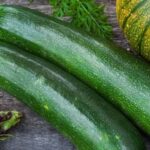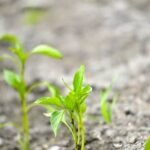Hydroponics, also known as hydroponic gardening, is the practice of growing vegetables without soil. Instead of traditional farming methods, hydroponic gardening relies on a nutrient-rich water solution to nourish plants. This method has gained popularity in recent years due to its potential for higher yields and faster growth rates compared to conventional farming techniques.
In this article, we will explore the fundamentals of hydroponics, including its benefits, various types of systems, essential equipment needed to get started, and tips for maintaining a successful garden. Whether you’re a seasoned gardener looking to try something new or a beginner with a green thumb, understanding the basics of hydroponics can open up new possibilities for growing your favorite vegetables at home.
From selecting the right plants for hydroponic growing to troubleshooting common issues that may arise, this comprehensive guide will provide valuable insights into the world of soil-less gardening. By the end of this article, you’ll not only have a better understanding of how hydroponics works but also gain practical knowledge on how to set up and maintain your own thriving hydroponic garden.
Benefits of Hydroponic Gardening
Hydroponic gardening offers a range of benefits that make it an attractive option for growing vegetables without soil. Here are some of the key advantages:
1. Water efficiency: One of the major benefits of hydroponic gardening is its water efficiency. With traditional soil-based gardening, much of the water used is lost through runoff or evaporation. In hydroponics, water is recirculated within the system, meaning you can achieve significant water savings.
2. Space-saving: Hydroponic systems can be set up in a variety of configurations, allowing you to make the most of limited space. Vertical growing systems, for example, can maximize your growing area and increase your vegetable yield in a smaller footprint.
3. Reduced risk of pests and diseases: Because hydroponic gardens are grown in a controlled environment, there is a decreased risk of pests and diseases affecting your vegetables. This means less need for pesticides and herbicides, making hydroponically grown vegetables a healthier option for consumption.
In addition to these benefits, hydroponic gardening also allows for greater control over nutrient levels and pH balance, resulting in healthier and more nutrient-dense produce. Whether you’re an urban gardener with limited outdoor space or simply interested in exploring innovative growing methods, hydroponics offers numerous advantages for producing fresh and healthy vegetables.
Types of Hydroponic Systems
When it comes to hydroponic gardening, there are several different types of systems to choose from. Each system has its own set of advantages and considerations, so it’s important to understand the various options before deciding which one is right for you. Here are some common types of hydroponic systems to consider:
1. Drip Systems: These systems deliver nutrient-rich water directly to the plant’s roots through a network of tubes and emitters. Drip systems are popular for their efficiency and versatility, as they can be used for a wide variety of plants.
2. Deep Water Culture (DWC): In this system, plants grow directly in a nutrient solution, with their roots suspended in the water. This method is simple and low-maintenance, making it great for beginners.
3. Nutrient Film Technique (NFT): NFT systems involve a continuous flow of nutrient solution over the plant roots, creating a thin film of water that provides oxygen and nutrients. This method is ideal for leafy greens and herbs.
4. Wick Systems: Wick systems use a passive wicking material to deliver nutrients to the plants’ roots. While these systems are easy to set up and operate, they may not be as efficient as other methods.
5. Aeroponics: Aeroponic systems mist the plant roots with nutrient solution, allowing them to absorb oxygen more effectively. This method is highly efficient but may require more advanced technical knowledge.
When choosing a hydroponic system, consider factors such as your available space, budget, the types of plants you want to grow, and your level of experience with hydroponic gardening.
Overall, each type of hydroponic system has its own set of unique benefits and challenges. By carefully considering your options and understanding how each system works, you can select the right setup for your specific needs and preferences in hydroponic gardening.
Essential Equipment for Hydroponic Gardening
When it comes to hydroponic gardening, having the right equipment is essential for success. Unlike traditional soil-based gardening, hydroponic systems require specific tools and supplies to create the perfect environment for plant growth. Here are some of the essential equipment you’ll need to get started with your own hydroponic garden.
Hydroponic Growing System
The first and most important piece of equipment you’ll need for hydroponic gardening is the actual growing system. There are several types of hydroponic systems to choose from, including nutrient film technique (NFT), deep water culture (DWC), and drip systems. Each system has its own advantages and disadvantages, so it’s important to do your research and choose the one that best fits your needs and space requirements.
Lighting
Since hydroponic plants are not getting natural sunlight from soil, they will need a strong artificial light source to thrive. High-quality grow lights, such as LED or high-pressure sodium (HPS) lights, are essential for providing plants with the spectrum of light they need for photosynthesis. Make sure to position the lights at the correct distance from your plants to avoid burning or stretching.
Nutrient Solution
In a hydroponic system, plants rely on a nutrient solution rather than soil for their essential nutrients. This means that you will need a reliable source of high-quality hydroponic nutrients to mix with water and feed your plants. Look for a balanced nutrient solution that includes all the macronutrients and micronutrients that plants need for healthy growth.
Having these essential pieces of equipment will set you up for success in your hydroponic gardening endeavors. With the right tools and supplies, you can create an optimal environment for growing vegetables without soil and enjoy a bountiful harvest of fresh produce all year round.
Selecting the Right Vegetables for Hydroponic Growing
When it comes to hydroponic gardening, not all vegetables are created equal. Some thrive in the soilless environment of a hydroponic system, while others may struggle to grow without the support of traditional soil. When selecting the right vegetables for your hydroponic garden, it’s important to consider factors such as the plant’s adaptability to hydroponic growing conditions, its yield potential, and the amount of space it will require.
Adaptability to Hydroponic Growing Conditions
Certain vegetables have been found to be particularly well-suited for hydroponic gardening due to their ability to thrive in a soilless environment. Leafy greens such as lettuce, spinach, and kale are excellent choices for hydroponic systems, as they have shallow root systems and can readily absorb nutrients from the water. Herbs like basil, cilantro, and mint also perform well in hydroponic setups, making them popular choices for indoor gardens.
Yield Potential and Space Requirements
When selecting vegetables for your hydroponic garden, consider the potential yield of each plant as well as its space requirements. Many vine crops such as tomatoes, cucumbers, and peppers can produce abundant yields in a hydroponic system but will require adequate space and support structures. Compact plants like bell peppers and cherry tomatoes are great options for smaller hydroponic setups, while larger systems may accommodate sprawling cucumber or pumpkin vines.
Best Choices for Success
Ultimately, some of the best vegetables for hydroponic growing include leafy greens like lettuce and spinach; herbs such as basil and cilantro; compact vine crops like cherry tomatoes and bell peppers; and root vegetables like radishes and carrots. These plants have been proven to perform well in various types of hydroponic systems and offer excellent yields when given proper care and attention.
By selecting the right vegetables for your hydroponic garden based on their adaptability to soilless conditions, yield potential, and space requirements, you can set yourself up for success in cultivating a bountiful harvest using this innovative method of gardening.
Maintaining a Hydroponic Garden
In hydroponic gardening, maintaining the pH level of the nutrient solution is also crucial for the overall health of your plants. The ideal pH range for most vegetables in a hydroponic system is between 5.8 and 6.3. Regular testing and adjustment of the pH level will help prevent nutrient deficiencies and maximize plant absorption.
Pest control is another essential aspect of maintaining a successful hydroponic garden. While growing vegetables without soil can reduce the risk of certain pests, it is still possible for insects to cause damage to your plants. Implementing preventive measures such as using fine mesh screens, introducing beneficial insects, or using organic pest control methods can help minimize the risk of pest infestations in your hydroponic garden.
| Maintenance Tips | Description |
|---|---|
| Watering and Nutrient Management | Regularly monitor and adjust the nutrient solution to ensure optimal plant growth. |
| pH Level Maintenance | Keep the pH level of the nutrient solution within the ideal range to prevent nutrient deficiencies. |
Harvesting and Enjoying the Fruits of Your Hydroponic Labor
After putting in the hard work of setting up and maintaining your hydroponic garden, it’s time to reap the rewards of your labor. One of the many benefits of hydroponic gardening is that it often leads to higher yields and faster growth compared to traditional soil-based gardening. This means you can enjoy a bountiful harvest of fresh, homegrown vegetables throughout the year.
When it comes to harvesting your hydroponically grown vegetables, it’s important to do so at the right time for optimal flavor and nutritional value. Leafy greens like lettuce and kale are best when harvested young, before they become too mature and tough. On the other hand, tomatoes and peppers should be allowed to fully ripen on the vine before picking for the best taste.
Once you’ve harvested your hydroponic vegetables, it’s time to savor them at their peak. Whether you’re enjoying a crisp salad or using your freshly picked produce in a delicious recipe, you can take pride in knowing that you’ve grown it yourself in a sustainable and efficient way through hydroponics.
| Hydroponic Vegetable | Optimal Harvest Time |
|---|---|
| Lettuce | Youthful stage for tender leaves |
| Tomatoes | Fully ripened on vine for best flavor |
| Bell Peppers | Fully ripened on vine for sweet taste |
Troubleshooting Common Hydroponic Gardening Issues
In conclusion, hydroponic gardening offers a unique and innovative way to grow vegetables without soil, providing numerous benefits such as water conservation, space efficiency, and precise control over nutrient levels. By understanding the basics of hydroponics and selecting the right system and equipment, anyone can successfully cultivate a bountiful harvest of delicious vegetables. However, like any form of gardening, hydroponic systems can encounter issues that may impact plant growth and yield.
It is important to be proactive in addressing these common hydroponic gardening issues to ensure a successful harvest. By monitoring water quality, maintaining proper nutrient levels, and implementing effective pest control measures, growers can overcome challenges and maximize their yields. Additionally, staying informed about potential issues such as nutrient deficiencies or root rot will enable hydroponic gardeners to identify and address problems promptly.
Overall, troubleshooting common hydroponic gardening issues is an essential part of achieving success in this innovative growing method. With careful attention to detail and a proactive approach to problem-solving, individuals can enjoy the satisfaction of harvesting fresh, healthy vegetables from their own hydroponic gardens. As interest in sustainable agriculture continues to grow, hydroponics offers an exciting opportunity for both experienced gardeners and beginners to explore new ways of cultivating nutritious produce year-round.
Frequently Asked Questions
Can Hydroponic Plants Grow Without Soil?
Hydroponic plants can indeed grow without soil. Instead of soil, these plants are grown in a nutrient-rich water solution that provides all the essential elements and minerals needed for healthy growth.
Do Hydroponic Gardens Need Soil?
No, hydroponic gardens do not need soil. In fact, the whole concept of hydroponics revolves around growing plants without soil. The roots are supported by an inert growing medium such as perlite or rockwool, but the nutrients come from the water instead of the soil.
Can a Plant Be Grown in Just Water in Hydroponics?
Yes, a plant can be grown in just water in hydroponics through a method called “water culture.” In this system, the plant’s roots are suspended in a nutrient solution without any growing medium. This method is commonly used for growing lettuce and some herbs hydroponically.

If you’re looking to get into vegetable gardening, or are just looking for some tips on how to make your current garden better, then you’ve come to the right place! My name is Ethel and I have been gardening for years. In this blog, I’m going to share with you some of my best tips on how to create a successful vegetable garden.





